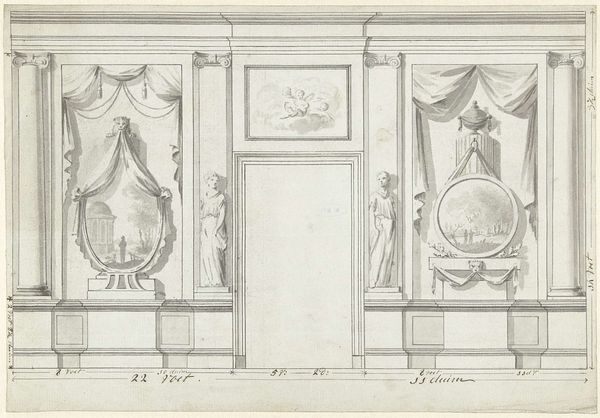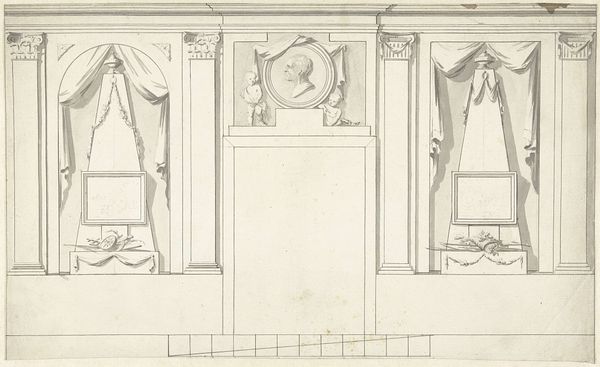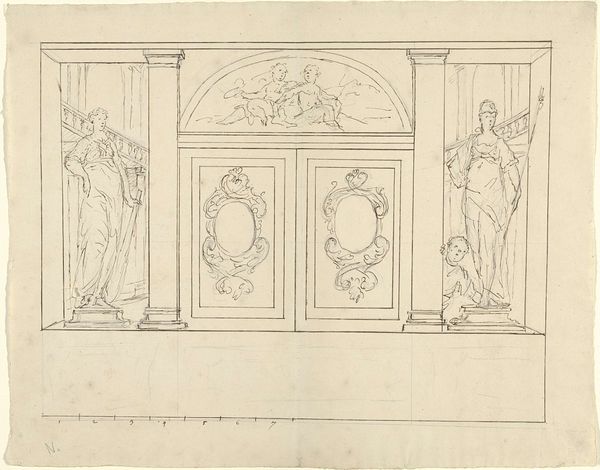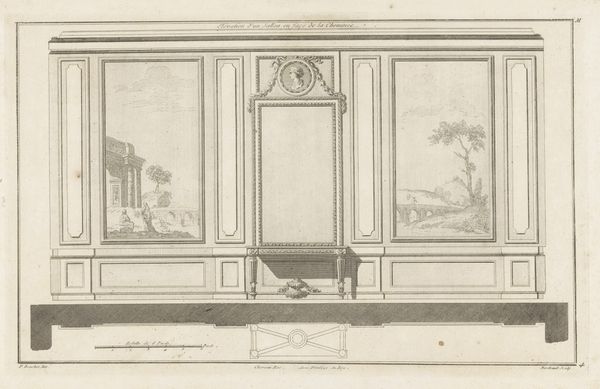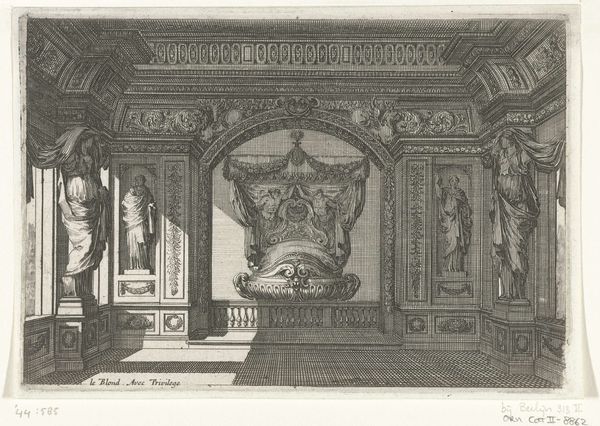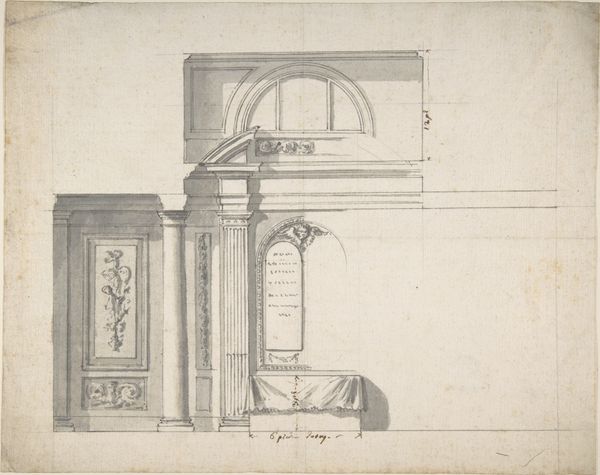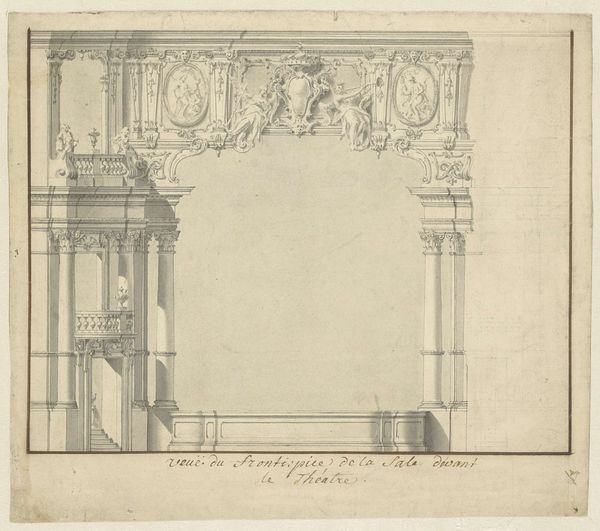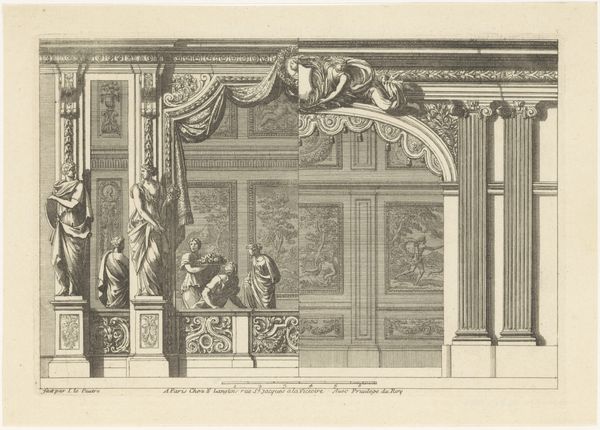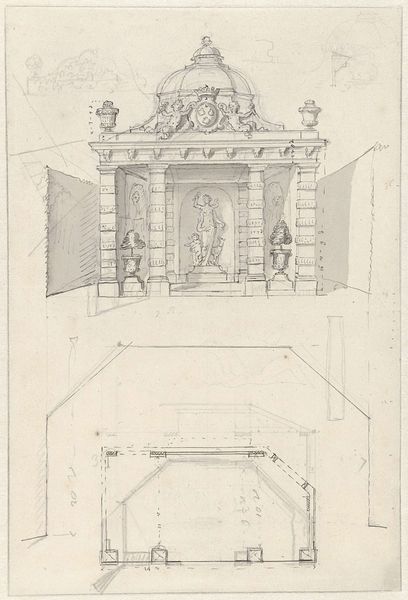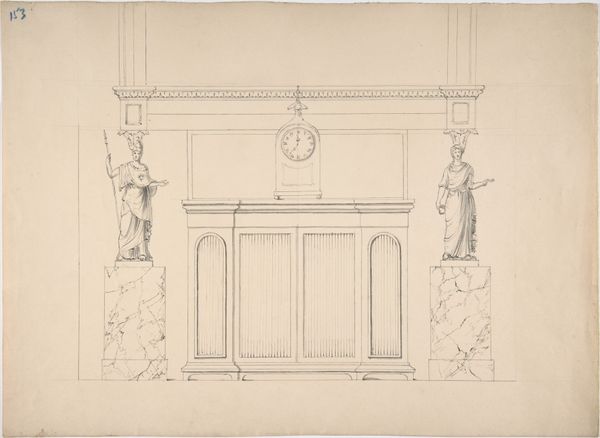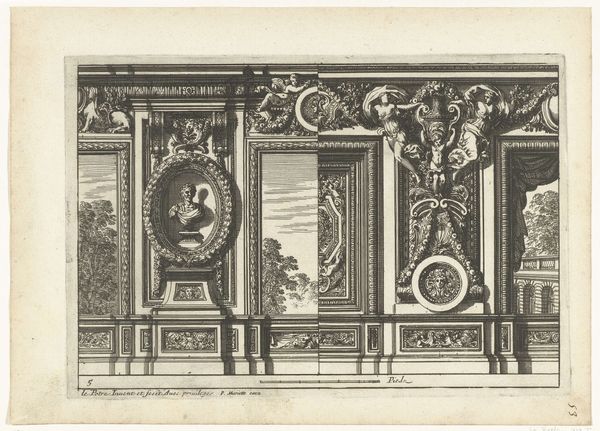
Ontwerp voor kamerversiering met twee panelen met landschappen geflankeerd door een standbeeld van een vrouw 1767 - 1823
0:00
0:00
drawing, ink, architecture
#
architectural sketch
#
drawing
#
neoclacissism
#
landscape
#
etching
#
figuration
#
ink
#
architecture drawing
#
history-painting
#
architecture
Dimensions: height 217 mm, width 318 mm
Copyright: Rijks Museum: Open Domain
Curator: This drawing, "Ontwerp voor kamerversiering met twee panelen met landschappen geflankeerd door een standbeeld van een vrouw," by Abraham Meertens, dates from between 1767 and 1823, offering us a glimpse into the decorative arts of the Neoclassical era. Editor: My immediate reaction is to the cool austerity of it all. The meticulous rendering in ink, the pallid grayscale palette—it speaks to a kind of controlled elegance, but almost severe. Curator: Indeed. Neoclassicism was a conscious return to the perceived purity of classical forms and ideals, reflecting the political and social climate of the Enlightenment, with its emphasis on reason and order. Notice the architectural framework. How it’s used to create a backdrop to enframe allegorical or history paintings to further ideas through virtue and decorum. Editor: And these classical figures... statuettes acting as decorative features. The choice of materials, imagined in stone or plaster, also serves to enforce that air of coolness. It's not just about decoration, is it? More a display of learned taste? Curator: Absolutely. The room decoration here would showcase the owner’s classical learning, aligning themselves with the cultural values of the elite. These landscapes flanking the statue further root the design into intellectual artistic history. It's not simply about luxury; it’s about constructing an image of enlightened gentility. Editor: It's intriguing to think of the labor involved. A whole system of makers needed: draftsmen like Meertens conceiving the ideas, then the sculptors, painters, carpenters, and the people extracting the stone. A team of artisans involved in the production of "taste". Curator: Exactly, and the room itself would have become a stage for social performance. Think of the conversations that this room was meant to spark among visitors—about philosophy, virtue, aesthetics, antiquity... Editor: In viewing these artifacts, you suddenly get insight into all sorts of systems. These systems of labor and the history that they help portray. I’m still taken by how different such an aesthetic is compared to some of today’s approaches, which tend to focus on individual taste and personal narratives more than making displays of decorum or “ virtue.” Curator: Precisely. This drawing provides not just an image of a room but insight into the complex relationship between art, power, and social identity in the 18th and 19th centuries.
Comments
No comments
Be the first to comment and join the conversation on the ultimate creative platform.
